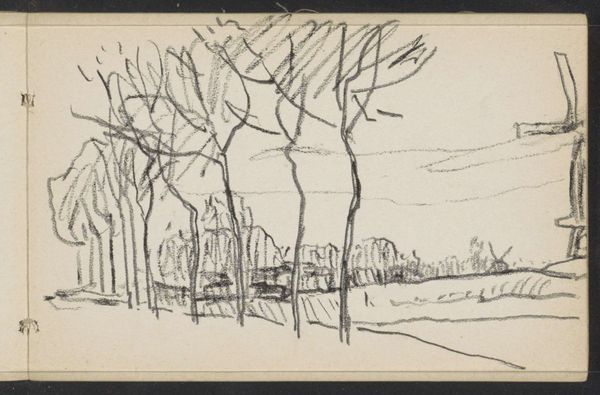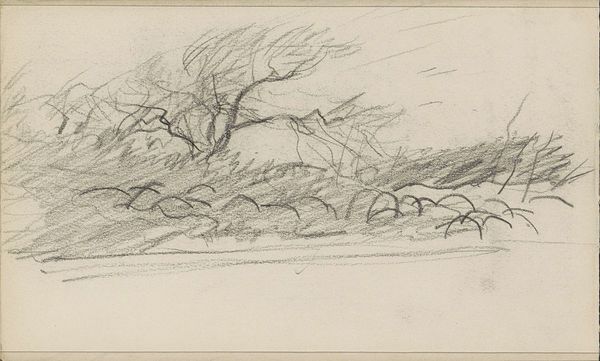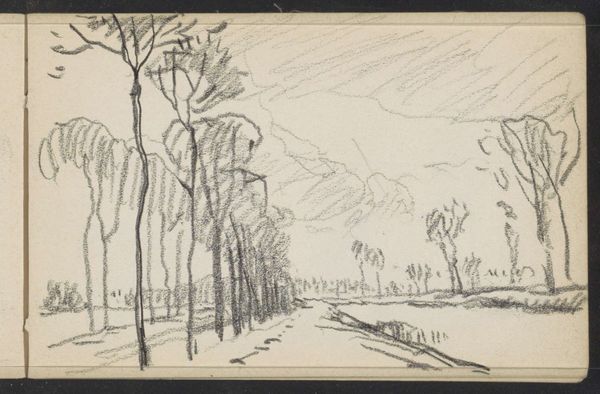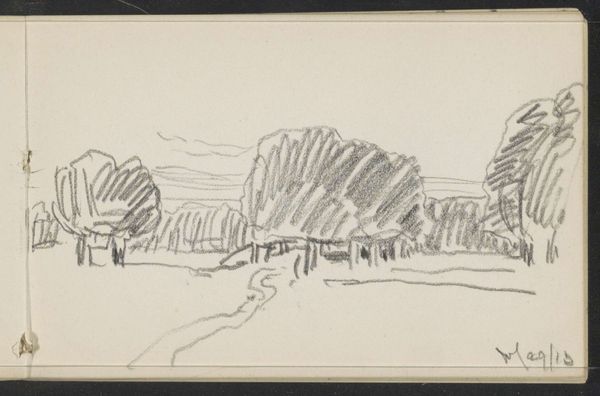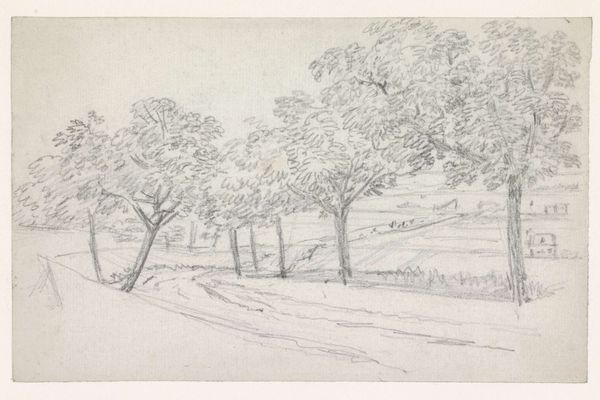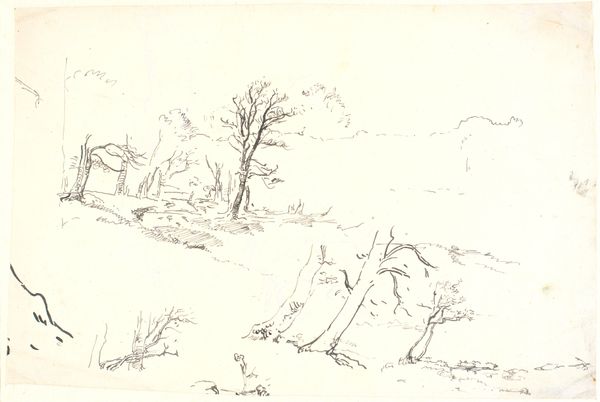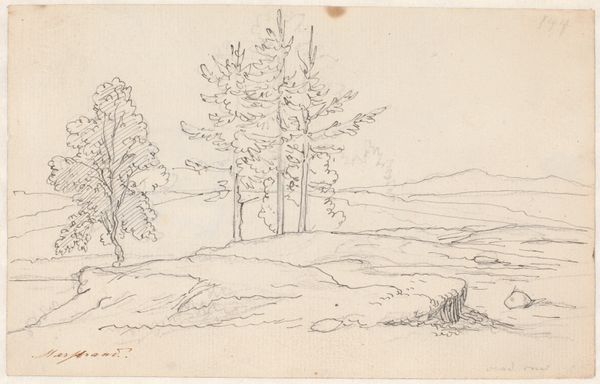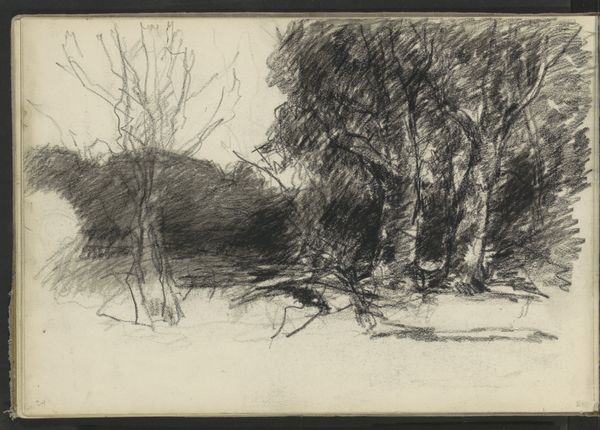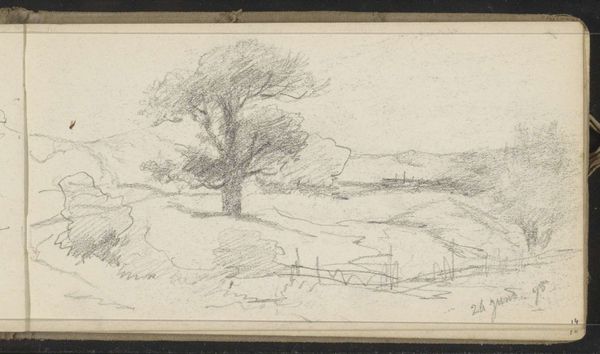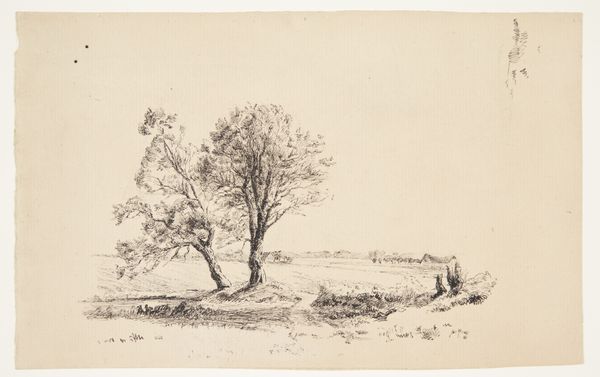
Copyright: Rijks Museum: Open Domain
Curator: Welcome. Here we have "Landscape with Pollard Willows and Windmills," rendered in graphite pencil, attributed to Alexander Shilling, possibly dating from 1908. Editor: It's like a memory fading into the paper. Sparse, evocative—there's a somber quiet humming beneath the surface. A bleak kind of beauty. Curator: Precisely. Note the compositional balance: the skeletal trees in the mid-ground acting as a visual anchor against the distant windmills. See how Shilling uses line weight to define space. Thicker lines describe the immediate foreground, while delicate strokes fade into the atmospheric sky. Editor: And that sky... those frantic, swirling graphite marks feel almost tormented, like the weather itself is having a minor existential crisis. But I'm drawn to the windmills. Tiny sentinels watching over the fields. They have a certain folksy charm, despite the sketch's overall melancholy. Curator: Shilling adeptly employs hatching and cross-hatching to imply texture and volume, despite the reductive nature of the medium. This suggests a deeper exploration of form beyond mere surface representation. The pollard willows, particularly, are rendered with a deliberate angularity. Editor: You’re right—it isn't just documentation. It's about how we feel the land. Makes you wonder about Shilling’s state of mind. Was it a quick plein air sketch, or a study of captured emotion rendered as a desolate place? Curator: An excellent question. The landscape motif prevalent in folk art offered him formal challenges: simplification of detail versus capturing the essence of the rural scene. Consider its place within Impressionism. How it simplifies forms to evoke raw sensation. Editor: To be honest, the bare-bones nature of it speaks volumes. It’s like a half-remembered dream— beautiful and disturbing all at once. Curator: Indeed. The inherent paradox makes it quite captivating. It seems we are drawn into contemplating what is revealed as much as what has been intentionally omitted. Editor: Definitely, a drawing to ponder over. There's always something new to discover in the emptiness.
Comments
No comments
Be the first to comment and join the conversation on the ultimate creative platform.
